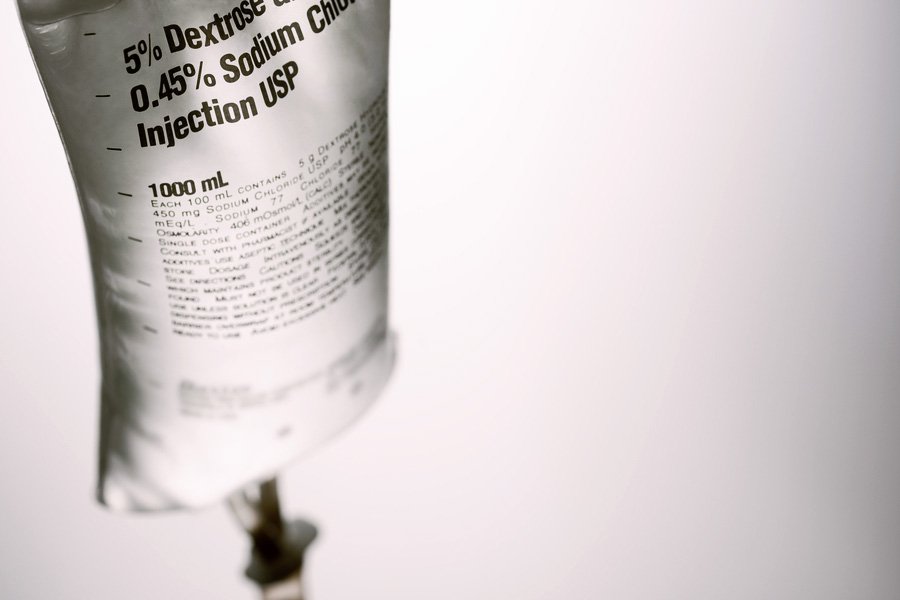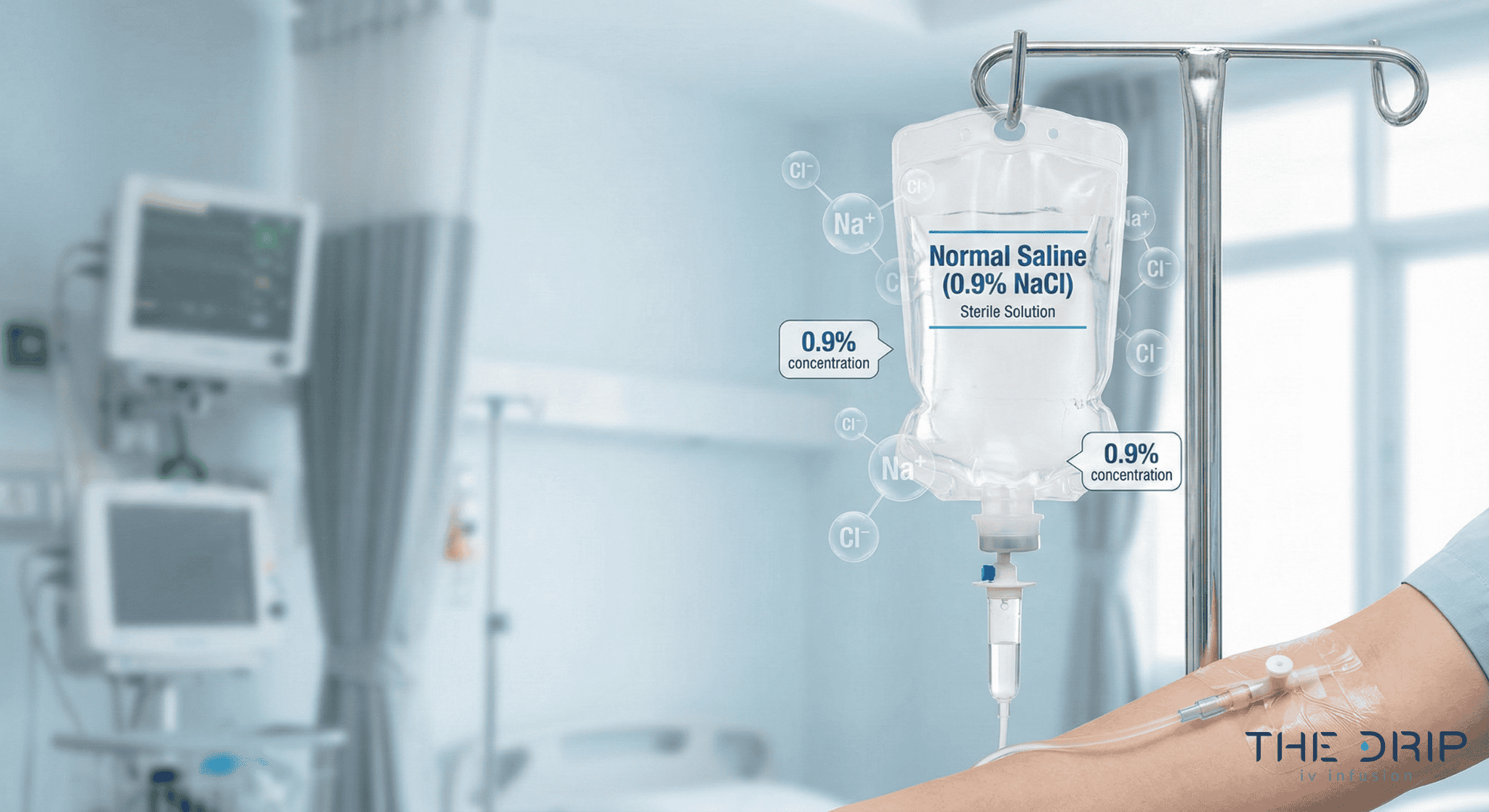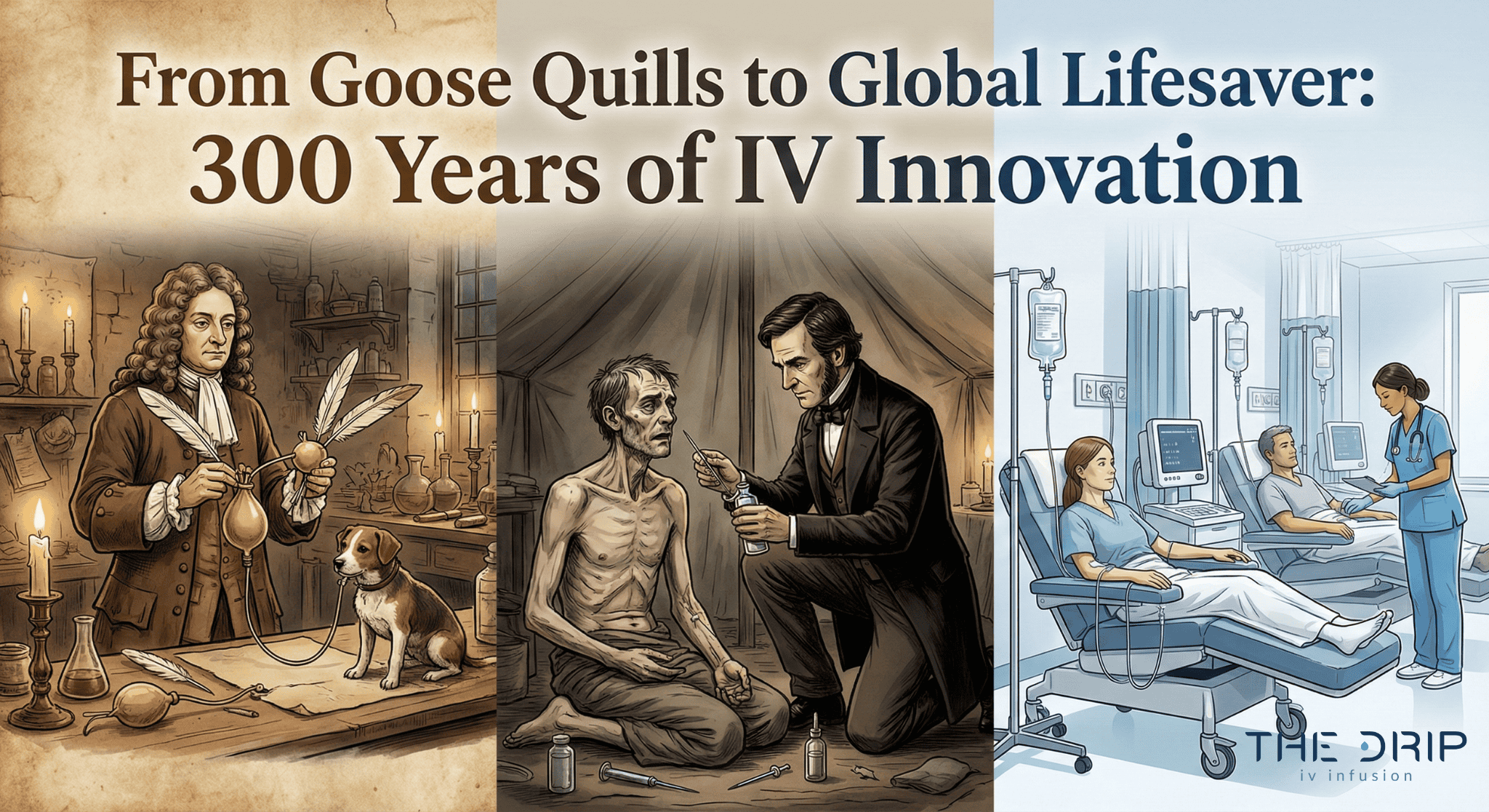IV therapy is a common medical procedure that involves delivering fluids, nutrients, or medication directly into a patient’s bloodstream. This technique ensures rapid and effective results, often prescribed to patients experiencing deficient fluid volume. However, there’s a wide variety of IV solutions and fluids, so patients may not fully understand what they are receiving through their IV. That’s why knowing the types of IV fluids and understanding the fundamentals of hypertonic IV fluids is critical for anyone planning to receive IV therapy.
Acknowledging and understanding the differences between IV fluid types is vital for patients as they directly impact their body’s fluid balance, electrolyte levels, and overall well-being. Three main types of IV fluids are distinguished by their tonicity, which refers to the volume behavior of cells in a solution. These are isotonic, hypotonic, and hypertonic.
In this article, you’ll learn more about hypertonic fluids and gain insights into the hypertonic IV solution used in medical settings. The content will also cover the definition and characteristics of hypertonic fluids, administration methods, and potential complications and adverse reactions associated with these fluids.

Source: shutterstock.com / Photo Contributor: Numstocker
Types of IV Fluids
Generally, IV fluids are grouped into two categories – crystalloid and colloid. Both of these groups are sterile solutions, and IV drip Arizona can customize them with various ingredients to address a number of conditions. However, they exhibit distinctive compositions, which have different reactions in the body.
Crystalloid solutions
Crystalloid solutions contain small electrolytes and molecules that easily pass through cell membranes, hence their common use in medical care. They’re also affordable and accessible, as well as shelf-stable and free of allergens, adding to their popularity. They can be divided into three subgroups including:
Isotonic solutions maintain a balanced osmotic pressure with equal amounts of fluids, both on the inside and outside of cells. This is due to the volume of the isotonic solution resembling that of your blood plasma.
Hypotonic solutions increase fluid levels in cells. They’re particularly useful for conditions like diabetes, which may reduce levels of cellular fluid, disrupting their proper function.
Hypertonic fluids are the opposite of hypotonic, meaning they have a higher sodium content, which draws water out of the cells rather than brings it in. This makes hypertonic IV fluids ideal for replacing electrolytes but not as good for dealing with dehydration.
Colloids
Colloids are solutions containing larger molecules that cannot cross semipermeable membranes as crystalloid solutions do. They stay in your bloodstream instead of entering your cells.
Overview of Hypertonic IV fluids
Hypertonic intravenous solutions contain a higher concentration of sodium and chloride or dissolved particles, compared to plasma and interstitial fluid than the cells in your body. These are crystalloid intravenous fluids composed of NaCl dissolved in water with a higher sodium than in a normal blood serum.
Hypertonic IV solutions are available in the following forms and strengths:
3% sodium chloride (3% NaCl) – contains 513 mEq/L of sodium and chloride with an osmolality of 1030 mOsm/L.
5% sodium chloride (5% NaCl) – contains 855 mEq/L of sodium and chloride with an osmolality of 1710 mOsm/L.
10% dextrose water (D10W) – used to treat ketosis of starvation, providing calories (380 kcal/L), free water (distilled water that is free of any solutes), and no electrolytes.
20% dextrose water (D20W) – a hypertonic IV solution or an osmotic diuretic that causes fluid shifts between various compartments that may potentially promote diuresis.
50% dextrose water (D50W) – a strong hypertonic IV solution used to treat severe hypoglycemia and is administered rapidly via IV bolus.

Source: shutterstock.com / Photo Contributor: Thammasak Lek
How do hypertonic IV fluids function
Essentially, hypertonic fluids are used to increase intravascular fluid volume.
When administered, hypertonic fluids create an osmotic gradient, resulting in an increased concentration of dissolved solutes within the intravascular space in comparison to the cells. Consequently, this causes the osmotic movement of water from the cells or interstitial space into the intravascular space, leading to the diluting of solutes within the blood. However, hypertonic fluid saline stimulates vasopressin release from the pituitary gland, decreasing water loss through the kidneys.
Furthermore, the increase in intravascular volume simultaneously increases the mean arterial pressure (MAP), cardiac output (CO), and stroke volume (SV) when compared with equal volumes of standard saline or other isotonic fluids. Additionally, while a significant increase can be found in end-diastolic pressure, there’s a subsequent decrease in pulmonary vascular resistance. This suggests hypertonic fluid saline requires less overall volume administration to achieve similar plasma volumes as larger amounts of standard saline fluids.
Uses of Hypertonic IV Fluids
Hypertonic intravenous fluids exhibit a wide range of uses with diverse applications in medical settings. These fluids can be utilized to address specific medical conditions and health issues due to their elevated solute concentrations. So, hypertonic IV solution uses include:
Treatment of hyponatremia and other electrolyte imbalances – in patients with hyponatremia, hypertonic fluids with 3% saline are employed to potentially manage symptoms and correct the imbalance by raising serum sodium levels. This may also be useful in severe hyponatremia cases associated with neurological symptoms.
Management of cerebral edema – hypertonic solutions may help reduce cerebral edema by drawing water out of cells and potentially reducing brain tissue volume. This is considered a valuable treatment for cerebral edema in patients with traumatic brain injury.
Administration of medications, such as chemotherapy drugs – in certain medical cases, hypertonic solutions are utilized to act as a carrier solution and administer medications, such as chemotherapy drugs. The increased tonicity may have an impact on better drug distribution and absorption.
Administration of Hypertonic IV Fluids
Hypertonic fluids are administered parenterally by intravenous infusion. Generally, it’s done through central venous access, but administration via a peripheral intravenous catheter is also acceptable if no other option is available. While infusion volumes and rates are based on specific clinical indications, the initial rate of hypertonic administration is not to exceed 50 ml per hour.
Furthermore, precise administration techniques, controlled infusion rates, and accurate dosing are essential for ensuring the safety and efficiency of the procedure. Patients receiving hypertonic fluids demand careful attention and monitoring due to their potential effects on the cells. So, vigilant supervision is critical for avoiding and preventing any potential complications and adverse reactions associated with hypertonic intravenous fluids, such as:
Infection at the IV site
Thrombophlebitis
Extravasation
Hypervolemia

Source: shutterstock.com / Photo Contributor: Studio Romantic
Conclusion
In conclusion, a comprehensive understanding of what hypertonic IV fluids are and how they function is fundamental for anyone undergoing IV therapy. Their versatility and broad use are evident in their role in correcting various health issues, including treating hyponatremia, managing cerebral edema, and administering medications, among many more.
Proper administration and careful monitoring, as well as accurate dosing and controlled infusion rates, are critical for a safe and care-free procedure. With professional treatment, caution, and careful consideration, patients can confidently go through effective and individually tailored procedures.




